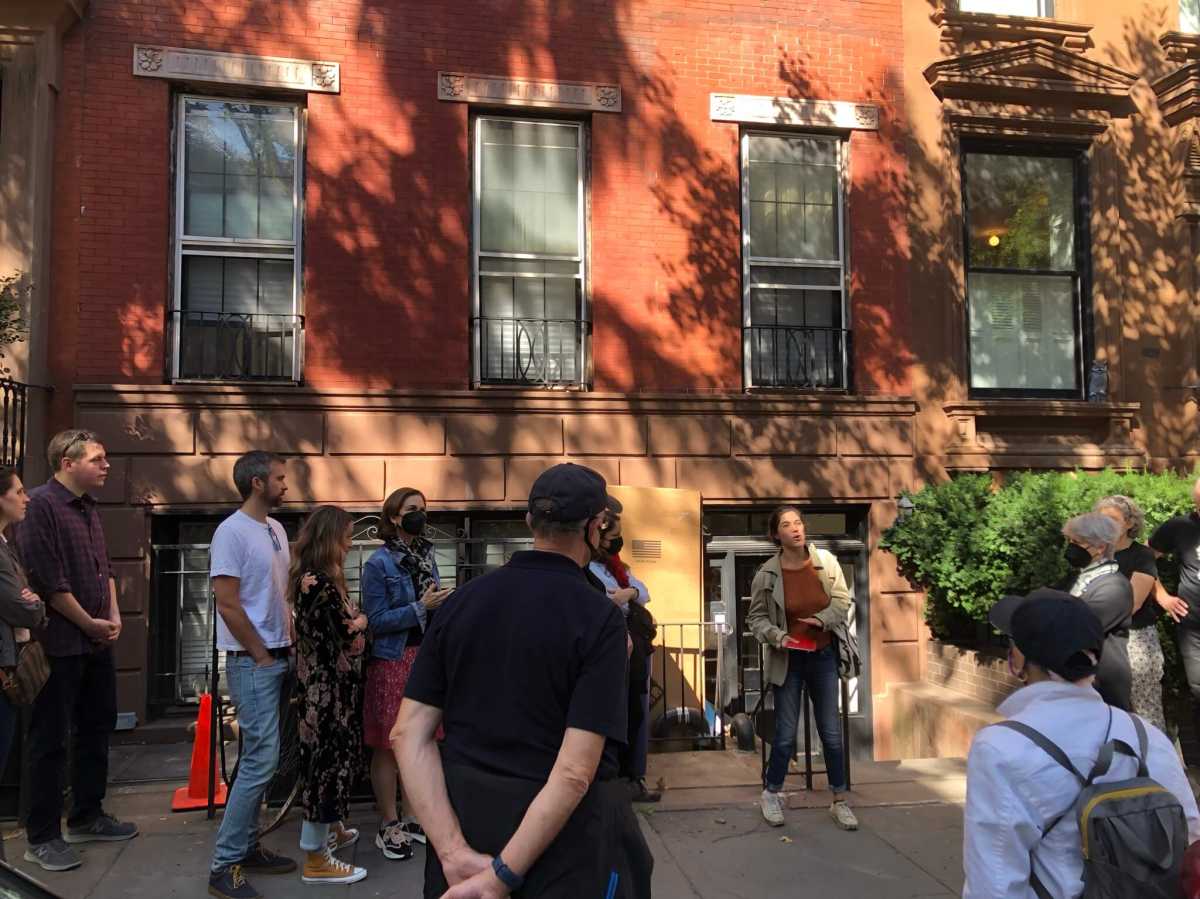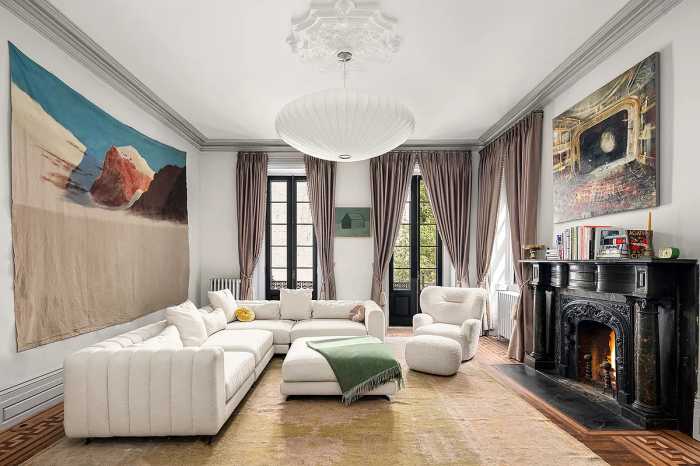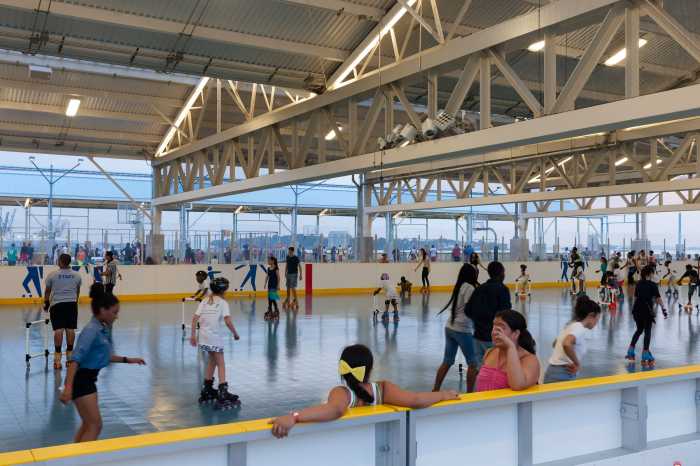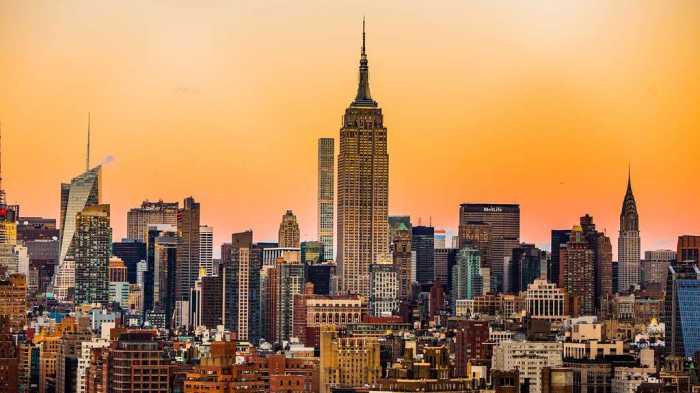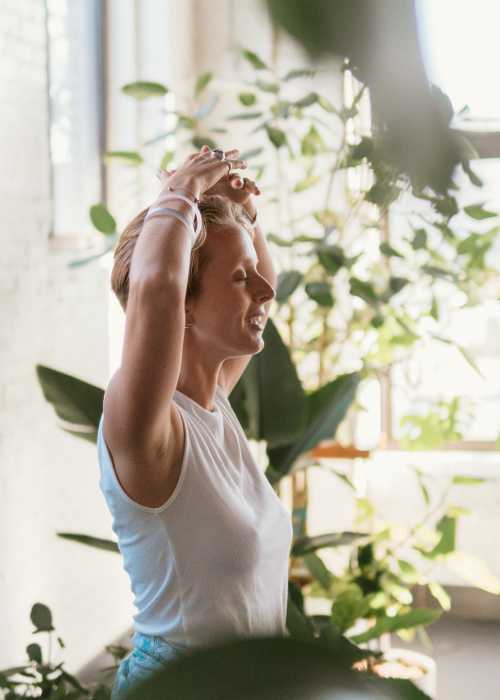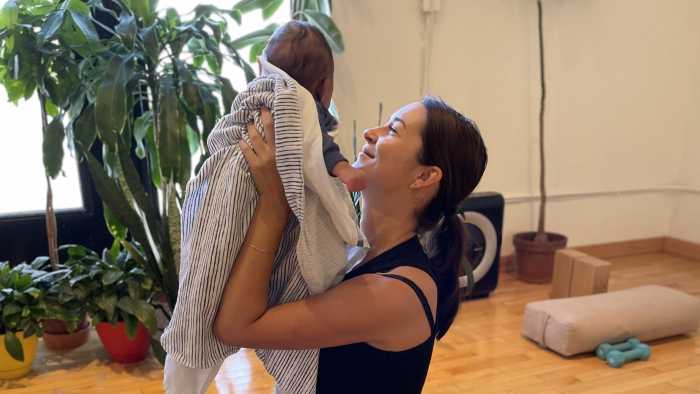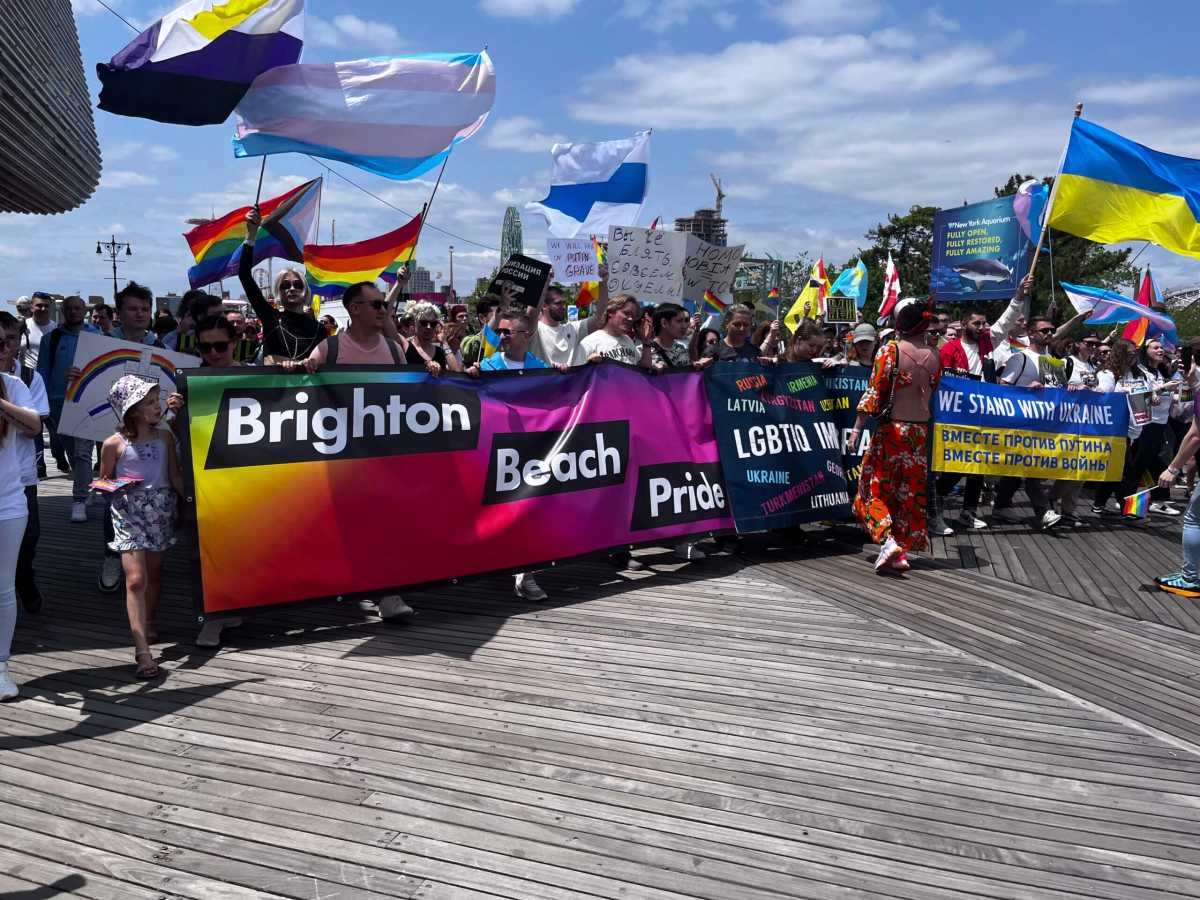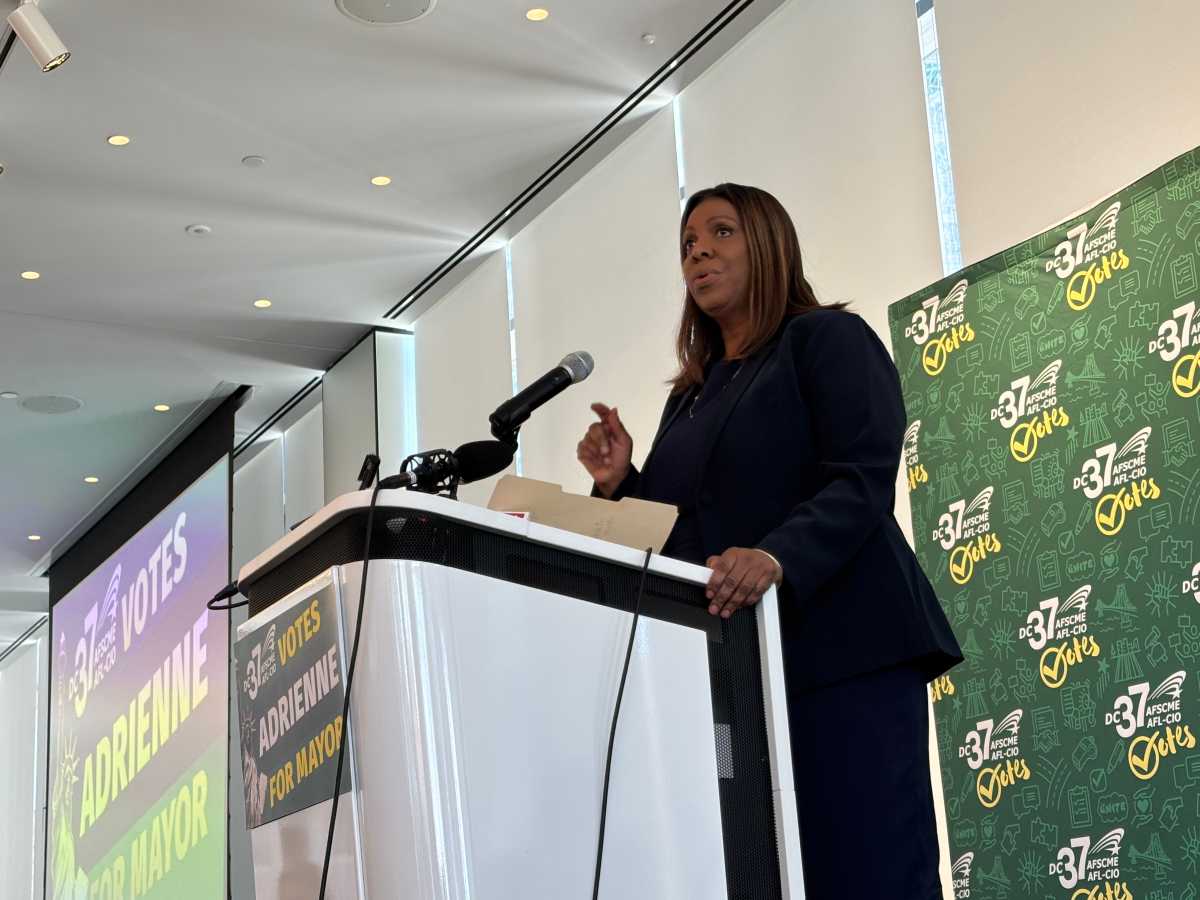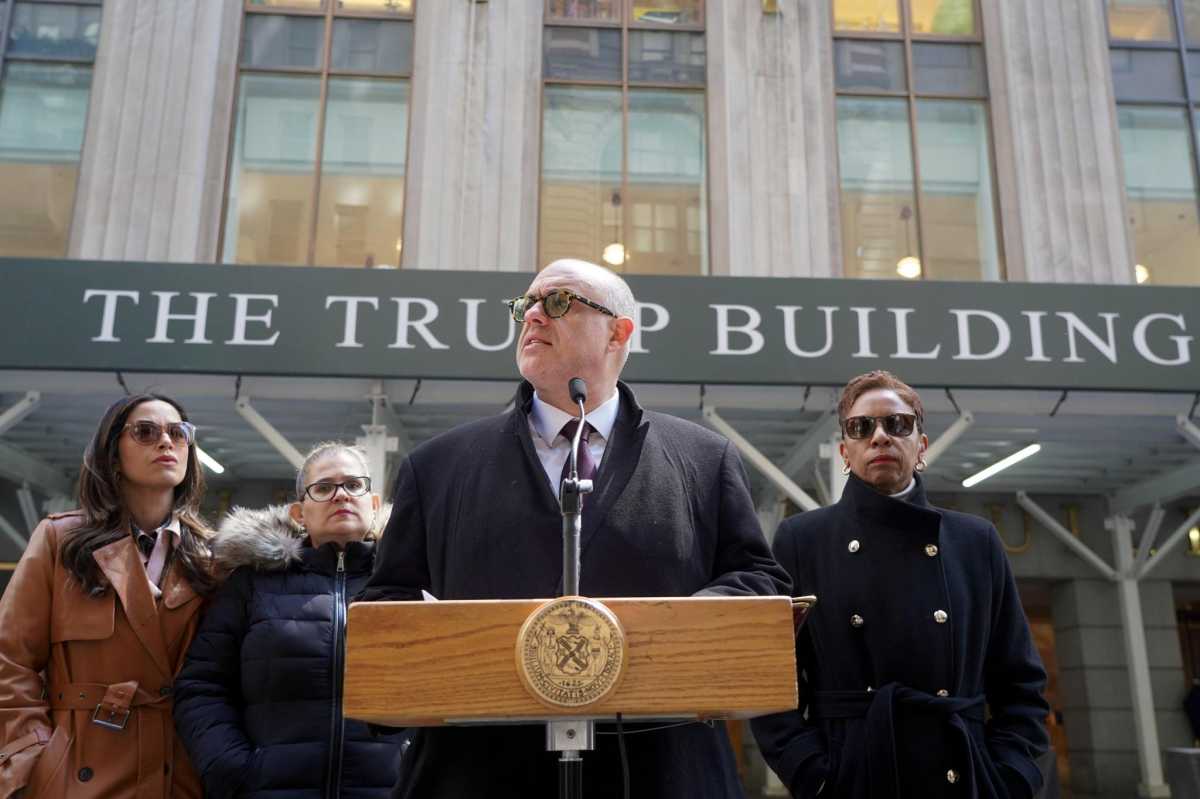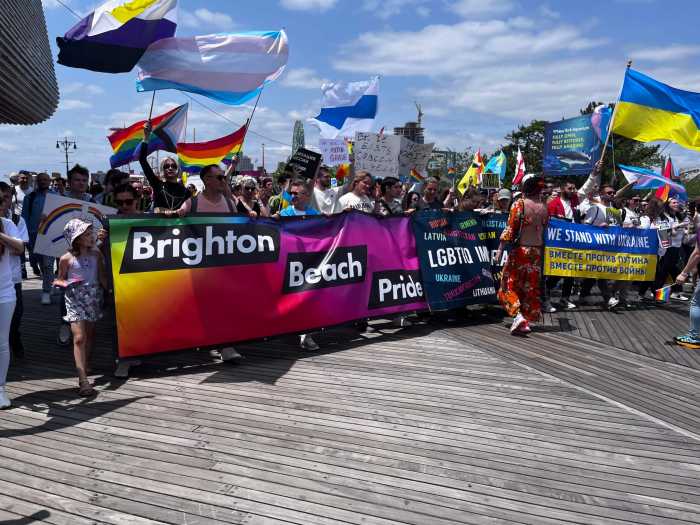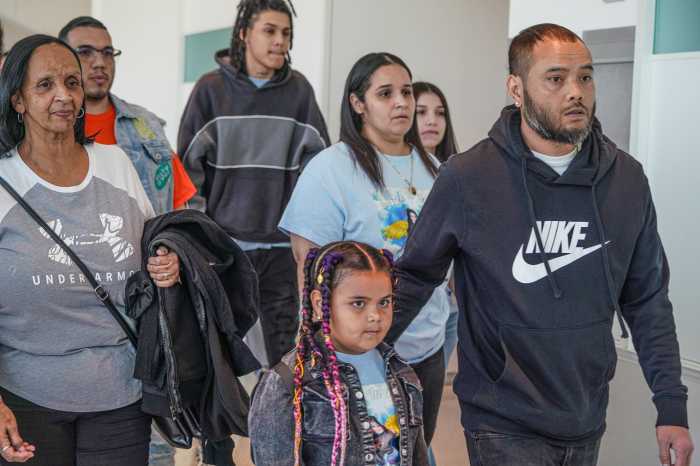Brooklyn’s history buffs can now take a walk down memory lane, as the local Brooklyn Heights Association has curated a series of walking tours for curious Kings Countians to explore the lesser-known history of the borough’s brownstones.
The series, which started on Oct. 2, was inspired by the 60th anniversary of the publication of “Old Brooklyn Heights,” a guidebook of sorts written by Clay Lancaster as part of the successful effort to establish a landmark preservation law in New York City. In 1965, Brooklyn Heights became the city’s first historic district designated by the brand-new Landmarks Preservation Commission.
To educate his neighbors on the historical richness of the neighborhood, Lancaster lead a series of walking tours in the early 1960s, focusing primarily on the concentration of century-old buildings he wanted to preserve.
BHA wanted to commemorate those tours, but not recreate them.
“It’s pretty well known now, even if it maybe wasn’t fifty years ago — a neighborhood like Brooklyn Heights has lots of beautiful houses, historic houses,” said Jeremy Lechtzin, BHA’s vice president and curator of the tours. “That’s the beginning and the end of the story that was told in 1960. What we want to talk about today is some other aspects of history.”
Each of the four tours, running Saturdays through Oct. 24, winds through a different part of history, exploring women’s suffrage, African American abolition, overlooked architecture, and queer history.
Lechtzin, a historian and tour guide himself, worked with his colleagues at the BHA to brainstorm possible tour topics — then went through and thought about which guides he knew who could bring each walk to life.
“The people who are leading the tours are all experts in what they’re talking about, and are great tour guides, and great storytellers,” he said.
Lucie Levine, a writer, historian, and founder of tour company Archive on Parade, started off the series with “Brownstones and Ballot Boxes,” a history of women’s activism and suffrage in Brooklyn Heights.
“For me, within the study that I do, I’m always drawn to those sort of untold stories,” Levine said. “Because history lives with us and is all around us, and like, what do we know, and what can we uncover and share.”
Brooklyn Heights was the home to early women’s suffrage organizations, Levine said, and the home to the first Black women’s suffrage organizations, the Equal Suffrage League, founded by Sarah Garnet.
“What’s cool about preservation in Brooklyn Heights is that because they were able to preserve the streetscape so well, you are literally standing at the homes of the women who have done this work, at the building where they held their meetings,” she said. “In front of the auditoriums where they gave rousing speeches. It’s this really moving situation.”
Along the tour, Levine stops at 64 Montague Street, the former home of Cornelia Hood, nicknamed “The Brooklyn Portia,” an early graduate of New York University’s law school and one of the first women in the country to get a law degree.
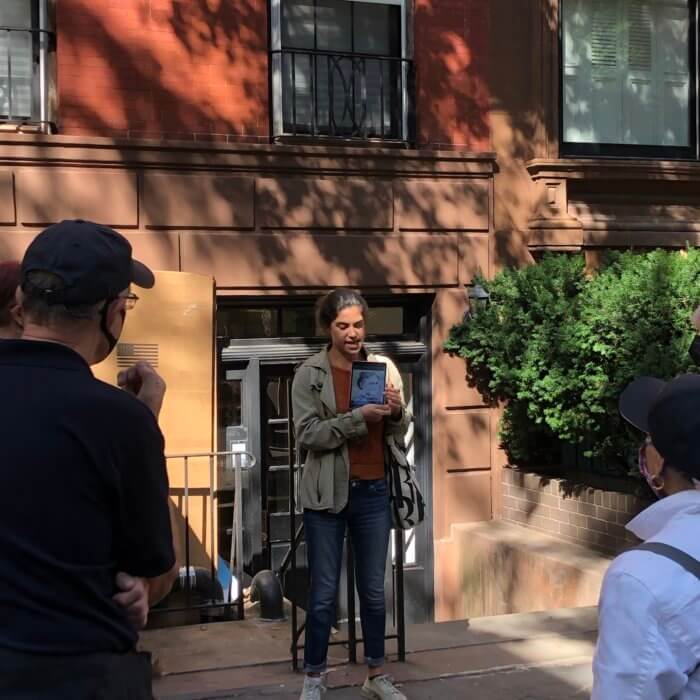
“I always call her the plaqueless pioneer, because there’s a plaque on that building but it’s not for her,” Levine said. “The plaque is for Arthur Miller, who also lived there.”
Leading the next tour, “Brooklyn Heights: African American Abolition and Self Determination,” is writer and local historian Suzanne Spellen.
A Brooklyn resident from the 80s until 2012, Spellen started researching the history of her neighborhood, Bedford-Stuyvesant, as a hobby – not much had been written about the history of Brooklyn outside of places like Coney Island, she said.
When she lost her job because of the recession, Spellen found herself with much more time to research and write about Brooklyn — and an outlet for that research, Brownstoner, now Brooklyn Paper’s sister publication.
After years of writing and research, she and a friend started leading walking tours for the Municipal Art Society of New York. She was asked to work on “In Pursuit of Freedom,” an extensive project exploring the history of abolition of slavery in Brooklyn.
Most people, including Spellen herself, when she started out, don’t know how much history they’re living with, she said.
“But when you start doing research, and learn about just the history of the neighborhood itself, including the architects, and the developers, and the first homeowners and all that, and then moving on to the communities, how they change over the years, you really realize that you’re walking in just piles of history,” she said.
She’ll lead her group through the history of Henry Ward Beecher and Plymouth Church, she said, and then to the still-standing home of Lewis Tappan, who, along with his brother Arthur, lead an outspoken faction of the abolitionist movement.
“They were different from a lot of the other abolitionists who were like, well, we hope slavery ends, and we’ll give money,” she said. “These guys were like, we want it to end now.”
Her favorite stop is the site of the home of James and Elizabeth Gloucester, who became one of the wealthiest Black women in the country.
“She was my shero,” Spellen said. “She was just a really incredible woman who overcame incredible odds and just made her place in Brooklyn society.”
“I think what I would love to see is that people realize that African American history isn’t some niche bit that gets trotted out in February or whenever people start screaming,” she said. “But it’s really a part of American history, and it should be just part and parcel of the story we tell about how Brooklyn developed or about how any place developed.”
Historian Matt Postal leads the only of the four tours to focus on architecture, “Beyond Brownstone: Overlooked Buildings in Brooklyn Heights,” focusing on the buildings constructed after the neighborhood’s best-known homes, and author Hugh Ryan finishes up the month with “A Queer History Walking Tour of Brooklyn Heights.”
Brooklyn Heights Association members pay $25 for tickets, while non-members pay $35, and people interested in attending a walk can register online.


